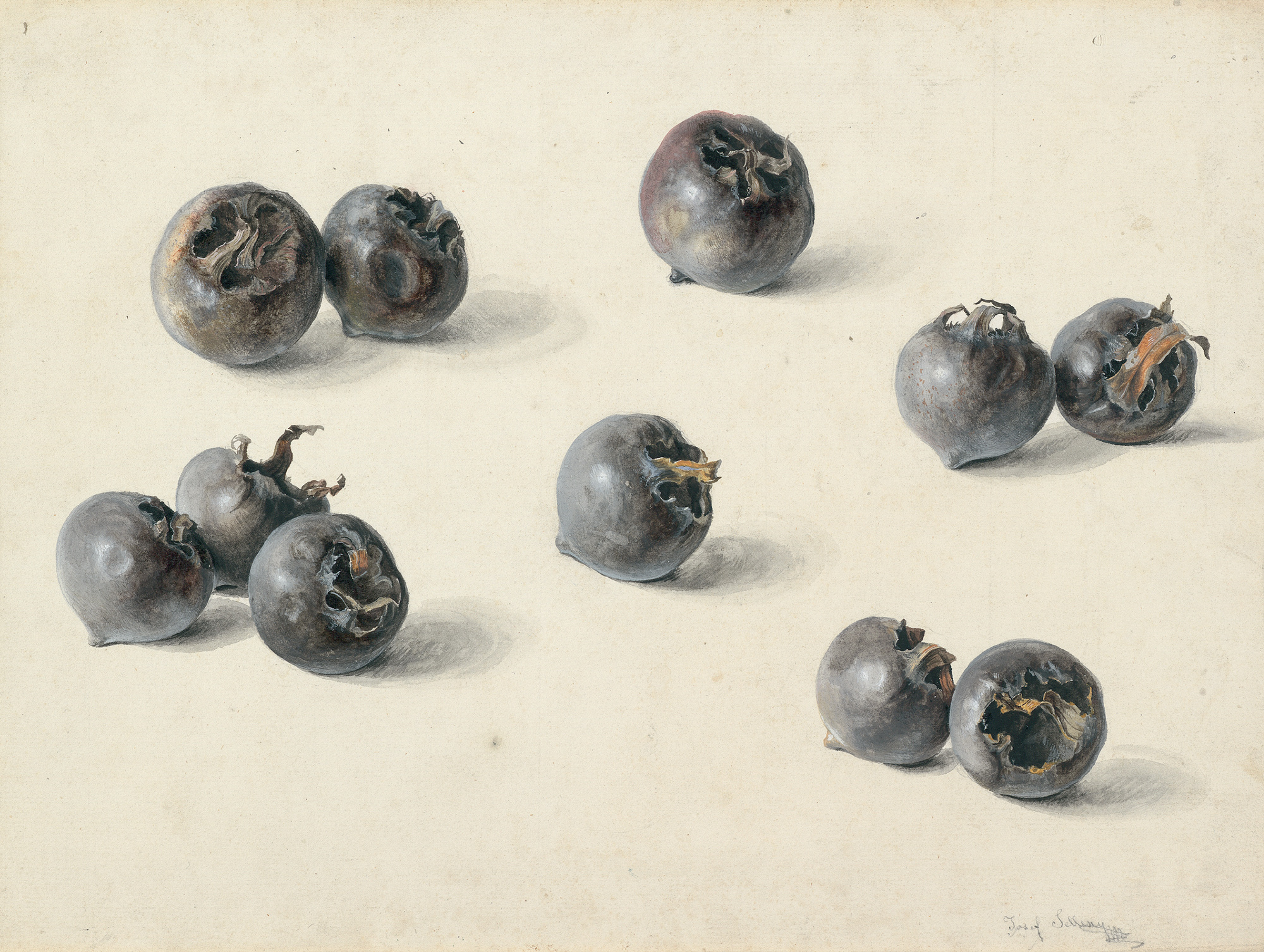Loading the page ...
Joseph Selleny
(1824 Vienna – 1875 Inzersdorf)
Study Sheet with Medlar Fruits. Watercolour and gouache. 26 x 34.4 cm. Signed: “Josef Selleny”.
The painter, watercolourist and printmaker, Joseph Selleny, studied under Thomas Ender and Franz Steinfeld at the Vienna Academy. Study journeys took him through Tyrol and Lombardy to Venice. Endowed with a scholarship from the Vienna Academy, the artist lived and worked in Rome and Naples in 1854/55. Selleny’s talent earned him the patronage of Archduke Ferdinand Maximilian, the Emperor’s brother. Thanks to this connection he was able to circumnavigate the globe on board the Austrian frigate “Novara”, a journey which lasted from April 1857 to August 1859. During this time he produced around two thousand watercolours and studies of ethnographical and natural historical interest, a considerable number of which are now in the Albertina and the Österreichische Galerie Belvedere in Vienna. Selleny’s subsequent career took a tragic turn. In the 1860s he was a successful freelance artist and garden architect in Vienna, but he suffered from a nervous disorder, of which he died at the psychiatric hospital in Inzersdorf near Vienna at the age of fifty-one.
The present brilliantly executed study of ripe medlar fruits illustrates the immense talent of this now little-known artist. Botanical studies played a key role in the art of the Viennese Biedermeier. Artists like Sebastian Wegmayr, Franz Xaver Petter and Ferdinand Georg Waldmüller practised the art of flower and fruit still life painting, a genre in which they achieved a very high degree of perfection. Our watercolour, which probably comes from a sketchbook, reveals remarkable similarities with the studies of medlar fruits produced by Franz Horny in 1817 during the first year of his stay in Italy. However, it appears somewhat unlikely that Selleny would have been personally acquainted with Horny’s works, which were held in very high esteem by his contemporaries. The two artists are linked rather by a similar artistic temperament and a comparable eye for essentials. The bulging, over-ripe medlar fruits are arranged against a neutral background in a visually very attractive manner like a still life. The gentle sunlight streaming in from the left and the delicately applied highlights bring out the varying vividness of the fruits, which are seen from different angles, and reproduce every colour nuance of their skin in an astonishingly lifelike manner. Selleny’s stupendous artistic ability makes the fruits seem almost tangible. At the same time he introduces an almost metaphysical note, which certainly had something to do with his melancholic nature. While his predecessor, Horny, shows us fresh medlars, the wilted sepals and the dark inside of Selleny’s fruits are signs of decay and mortality.
